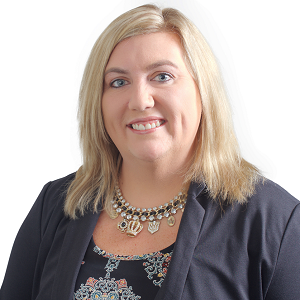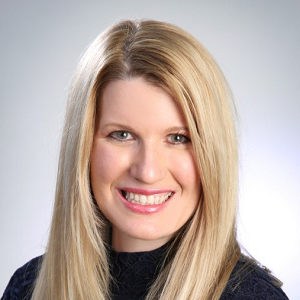Point/Counterpoint: Looking for a different take on the teller line? Evolving technology and alternative staffing models present opportunities for greater flexibility and efficiencies, but the conventional service model remains a mainstay of member care at many credit unions. Learn more in “Traditional Tellers Offer Tried-And-True Benefits.”
Top-Level Takeaways
- The universal banker model combines multiple roles to reduce member wait times and enhance operational efficiency. It also offers clear career advancement paths, resulting in high job satisfaction.
- Transitioning to a universal teller model requires strategic planning, investment in staff training, and, in some cases, reconfiguring branch layouts.
Along with advancing technology, one of the defining shifts in credit union service delivery has been the adoption of the universal banker, a model that combines the responsibilities of traditional tellers, member service representatives, and loan officers.
By empowering staff to perform everything from basic deposits to complex loan applications, credit unions offer members a seamless experience that also gives cooperatives new levels of operational efficiencies.
Credit unions considering the shift to a universal model must forge their own paths, taking into account internal cultures and external market demands.
Member And Employee Satisfaction
Franklin Mint Federal Credit Union ($1.9B, Chadds Ford, PA) transitioned to the universal banker model in August 2015 in response to changes in member behavior and preferences, says Mike Mastrangelo, who became chief retail officer in May 2015 and now has 16 years of service to the suburban Philadelphia cooperative.

“It was obvious member behavior and preferences were changing,” Mastrangelo says. “Members were adopting self-service options like online banking, and in-branch visits were becoming more about seeking guidance or advice.”
In response, FMFCU introduced member relationship advisors (MRAs) who are cross-trained to handle everything from simple deposits to loan applications. Mastrangelo says the model’s success lies in its three-level, skills-based approach to advancement, which provides staff with a clear career path.
“Staff appreciate when you invest in them and their potential,” he says, noting that employees now can advance within their roles through classroom and on-the-job training without having to move to another branch, leading to higher employee satisfaction and better service continuity for members.
Each of FMCU’s 17 branches has a branch manager and at least one assistant branch manager. The rest of the branch staff are MRAs. The credit union also has a contact center staffed by a manager, three supervisors, and a team of member service advisors who have the same advancement opportunities as the branch staff.
Member satisfaction has increased under this model in which MRAs can address a broader range of needs during a single visit and offer a more personalized, consultative approach. Indeed, the approach has deepened member relationships while reducing wait times and enhanced overall efficiency, Mastrangelo says.
SEE IT IN ACTION


Branch Efficiency
Texas Trust Credit Union ($2.0B, Arlington, TX) transformed its branches along with its staff roles when the Lone Star State cooperative transitioned to a universal banker model.
By removing traditional teller lines and introducing open consultation spaces, Texas Trust created a more inviting environment where members could engage with universal employees in a comfortable setting.

“Eliminating the traditional teller line creates an atmosphere where members can get help with whatever they need,” says Stephanie Sides, vice president of retail quality control and projects.
According to Sides, Texas Trust’s universal employees act as a “one-stop shop” for members, providing everything from routine transactions to more complex services like loan applications and account openings.
Based in Arlington, Texas Trust operates 21 branches in the Dallas-Fort Worth metroplex, in the East Texas town of Athens, and in San Angelo in West Texas. Sides says each branch has on average five employees, and the flexibility they offer has led to a more efficient branch experience, allowing members to avoid the delays often associated with waiting for specialized staff.
The shift has not been without challenges, however. Texas Trust invested heavily in staff training and reconfiguring its branches to accommodate the new model, Sides says. But she also says the results speak for themselves: improved member satisfaction, increased branch efficiency, and higher employee engagement as well as cost savings from a smaller branch footprint and open layout.
Member Preferences
Credit Union West ($1.2B, Glendale, AZ) began transitioning to the universal banker model in 2014 and completed the shift in 2021, according to Danielle Green, vice president of retail delivery.

“We saw a steady decline in traditional teller transactions, but members were waiting for more complex services like loan applications or card disputes,” Green says.
Now, 105 employees staff a dozen branches, with two more locations planned to open by mid-2025. A floating retail team of three supports branches and the contact center to cover during staff vacancies, Green says
The credit union cross-trains its universal bankers to handle a range of services, including routine teller transactions, loan applications, and account maintenance. This flexibility ensures members receive faster, more personalized service.
It also redesigned its branch layout to eliminate teller lines and create sit-to-stand stations, which allow for more dynamic interactions between members and staff. Green says the universal banker model has not only increased member satisfaction but also strengthened branch performance.
“The ability to offer personalized service and deepen relationships with members has led to greater loyalty and higher productivity,” Green says, adding that a focus on continuous employee development has created clear career paths, boosting employee morale and retention.
Not A Simple Switch Flip
The universal banker model has become an attractive approach for many credit unions looking to increase member satisfaction, improve operational performance, and offer employees fulfilling career opportunities. But it’s not as easy as flipping a switch.
“Switching to a universal model takes time,” says Sides at Texas Trust. “Don’t expect to make changes overnight.”
The vice president says her credit union slowly made position changes and allowed time for cross-training. She advises testing the new model at a small branch.
“Keep in mind that updating job descriptions, user permissions in the system to perform certain transactions, and making changes to branch layouts requires planning and implementation time,” she says. “All that involves multiple departments like IT, HR, and facilities, so having a plan for all of these functions can help you create a realistic timeline for the transition.”
3 Reasons To Go Universal
Mike Mastrangelo, chief retail officer at Franklin Mint FCU, offers three ways the universal banker model trumps the traditional model at his credit union.
-
Well-defined career paths: Retail staff have a transparent process to harness their potential and advance in their careers.
-
Workplace variety: Instead of focusing on low-value transactions all day, staff can engage in higher-value interactions with members.
-
Role fulfillment: As they grow stronger relationships with members, employees become trusted advisors.
